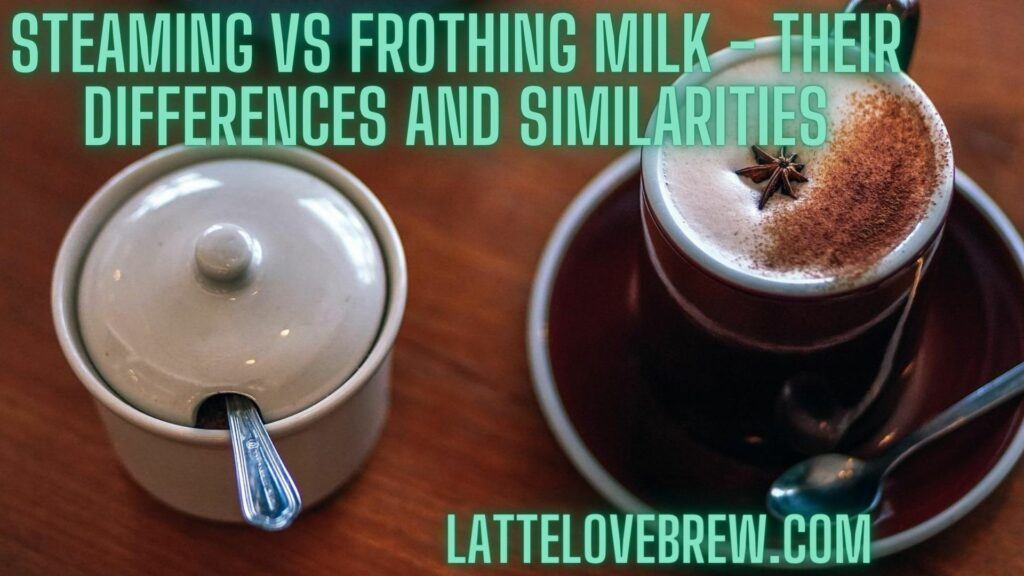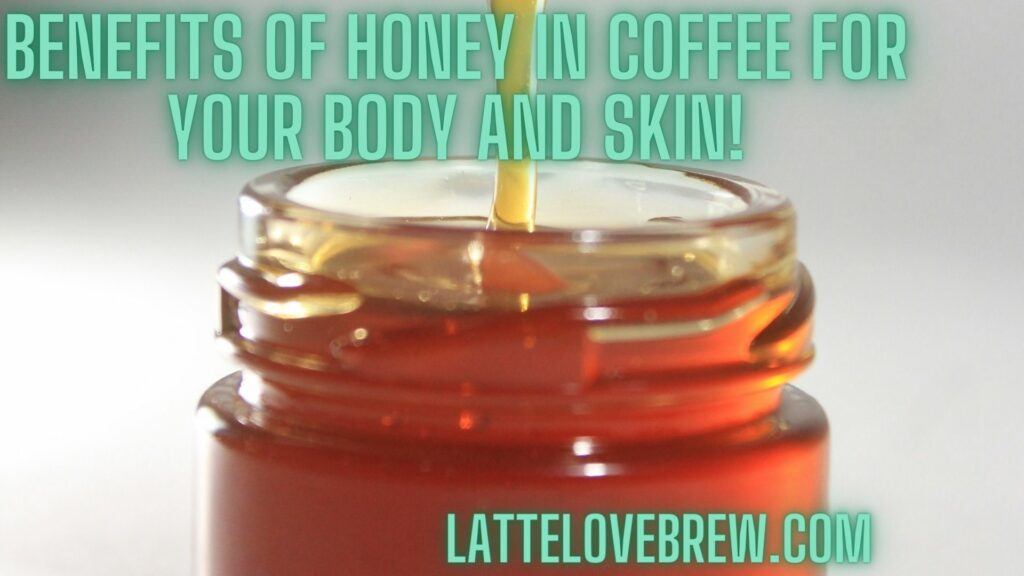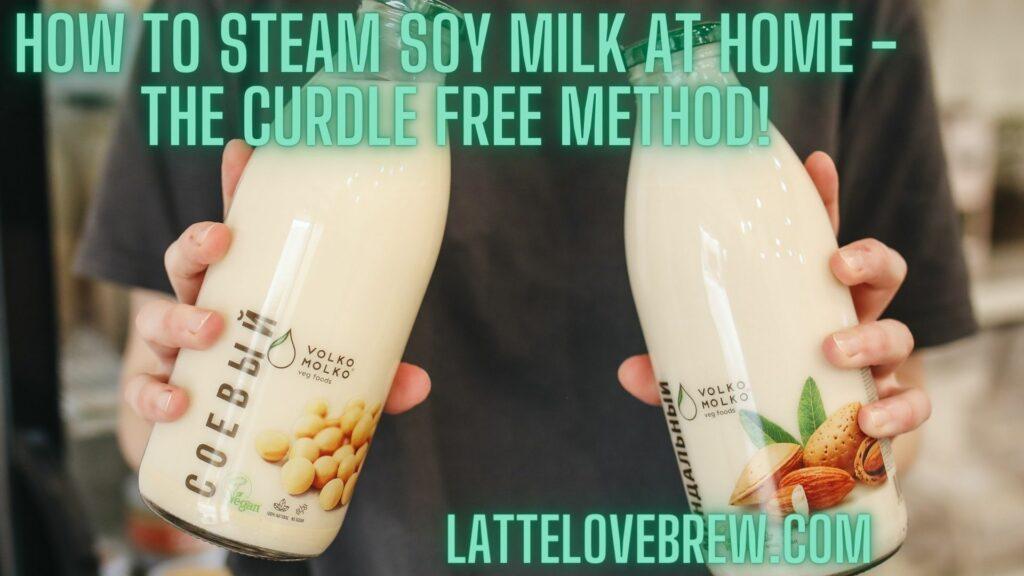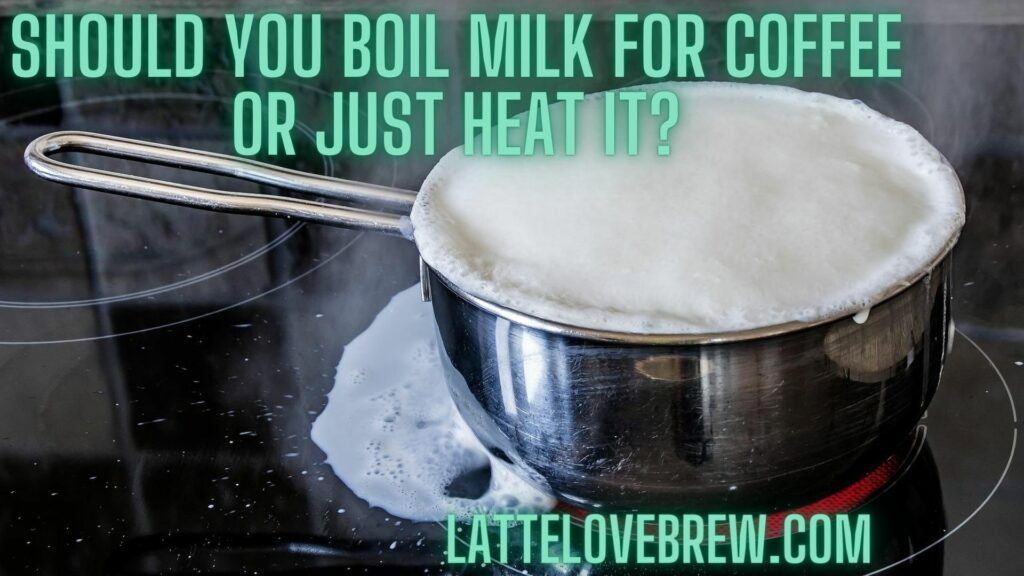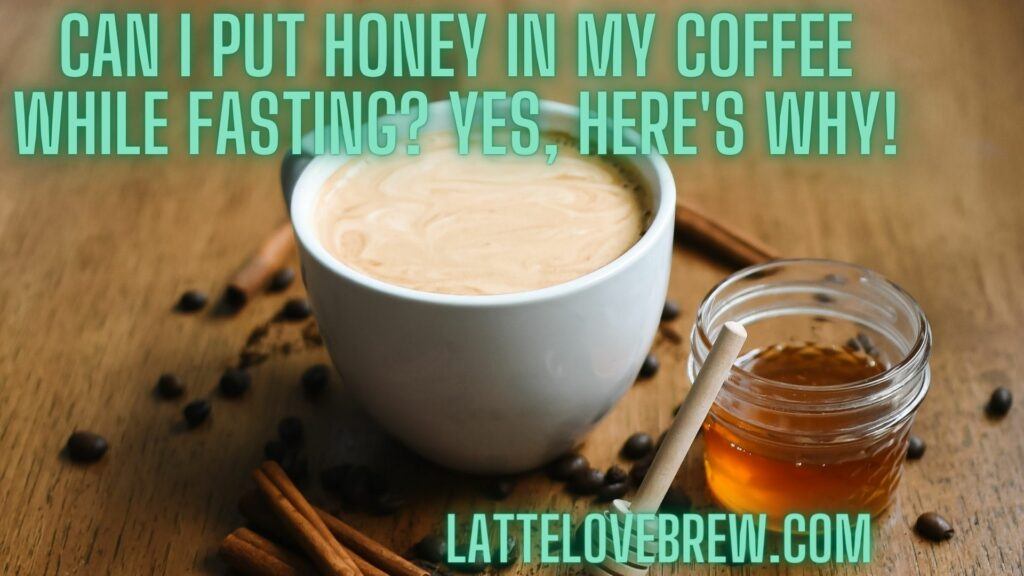Last updated on May 20th, 2024 at 12:01
If you are weighing up the pros and cons of a Percolator Vs Drip coffee maker then this article is exactly what you are looking for.
It has been hotly speculated in the coffee world which makes the best coffee for many years. While the answer is subjective, this article aims to help you to decide which is best for you and which best fits your own needs.
While I do express my own opinion in certain areas, it is based on my own expertise and experience as a coffee enthusiast and coffee lover!
Let’s get talking about these two popular brewing methods.
What Is A Coffee Percolator?
Table Of Contents
- 1 What Is A Coffee Percolator?
- 2 What Is A Drip Coffee Maker?
- 3 How Does A Coffee Percolator Work?
- 4 How Does A Drip Coffee Machine Work?
- 5 Flavor And Brew Strength
- 6 Percolator Vs Drip Coffee Caffeine Content
- 7 Brewing Skill Required
- 8 Brew Size
- 9 Versatility
- 10 Is A Percolator Better Than Drip?
- 11 Can I Use A Drip Coffee In A Percolator?
- 12 Can You Use Fine Grind Coffee In A Percolator?
- 13 How Do You Make Percolated Coffee Taste Better?
- 14 Frequently Asked Questions About Percolator Vs Drip Coffee
- 14.1 Is Percolator Coffee Better Than Drip?
- 14.2 Why Does Percolated Coffee Taste Better?
- 14.3 Is A Percolator The Same As Drip?
- 14.4 What Are The Drawbacks Of A Coffee Percolator?
- 14.5 Why Don t People Use Percolators Anymore?
- 14.6 Why Do Americans Drink Percolated Coffee?
- 14.7 Why Not To Use A Percolator?
- 14.8 Is Percolated Coffee Stronger Than Espresso?
- 15 Frappé-Ing It All Up – Percolator Vs Drip Coffee
A coffee percolator is something that needs no introduction for most people. They are the classic, and now almost forgotten counter top coffee brewers of the 1960s and before they got replaced by the humble drip coffee maker.
Traditional percolators brew coffee by continually cycling boiling water or almost boiling water through a basket of coffee grounds using gravity until a brew strength has been achieved. This method of brewing coffee uses a slightly higher temperature which recycles brewed “coffee water” over the grounds until a desired strength has been reached.
As a result, inexperienced individuals may over-extract and over brew and get an overtly bitter coffee. These are hazards of this brewing method, which can thankfully be overcome by a careful watchful eye and paying attention.
The percolator was first invented in Paris, France by Joseph Henry Marie Laurens in 1819. The first patent in America was granted to James Nason in 1865, with a more modern version patented by Hanson Goodrich 24 years later.
UK electro-domestic brand Russell Hobbs claims to be the inventor of the first electrically operated coffee percolator. These claims are questionable as there are other sources that place the electric percolators as having been available since the 1920s and 1930s.
I’ll talk about how a percolator works in a jiffy!
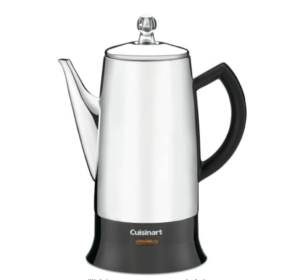
Read: SCA Certified Coffee Makers
What Is A Drip Coffee Maker?
A drip coffee maker needs no introductions as, undobtedly, you are already familiar with these also. These are automatic, or better described as semi-automatic coffee makers that have a large tank of water that then gets heated up and then slowly gets released over your coffee grinds which are in the brew basket.
The coffee then drips, slowly into the carafe below. The result is a clean, crisp tasting coffee.
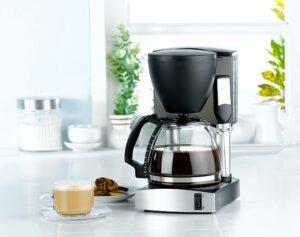
Read: Types Of Japanese Coffee Maker
How Does A Coffee Percolator Work?
The functionality of a coffee percolator is very easy to understand. It works in a very similar way in which a large coffee urn works or a significantly smaller Moka pot.
The lower chamber is where you put your water, which travels up a hollow metal tube in the center which then passes over a metal, normally stainless steel, which passes over your coffee grounds.
This metal basket or plate is usually covered with a lid that is porous with a filter at the bottom, below your grounds.
When your water heats up, it rises up through the cylindrical tube in the middle and over the spreader plate in the upper chamber and is distributed over the coffee grounds below. Due to gravity, the water then flows back down to the water chamber as coffee.
This coffee becomes more concentrated as it cycles time and time again through this process and the concentration of coffee gets stronger and stronger. You need to keep a watchful eye for not over brewing and over extracting your coffee.
How Does A Drip Coffee Machine Work?
A drip coffee machine has a separate water reservoir and, thus you have no danger at all of over brewing or over extraction. This is the distinctive difference between a Percolator Vs Drip coffee.
In the water tank, which is often a removable water tank, a heating element heats up the water which then rises in a combination of steam and bubbles up and through a small narrow tube in a similar fashion to a percolator.
The hot water then rises and a shower of water is evenly distributed over the coffee grounds. The water then drips down through a paper filter and into the carafe.
And viola, you have a well-brewed carafe of coffee without any overbrewing. The carafe is usually kept sitting on a hot plate that keeps your coffee warm.
If the carafe sits on the heated plate for too long, it can stew the coffee and start to taste off.
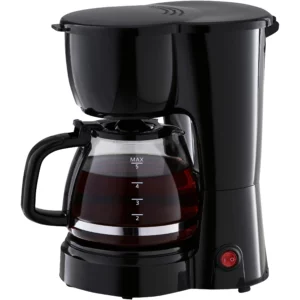
Flavor And Brew Strength
Percolated coffee is a stronger coffee, more robust, and deeper in taste than a drip coffee maker can produce. Essentially, this is due to you getting a double or triple brewed coffee due to the coffee cycling through and over the coffee grounds more than once.
You get two very different coffees produced by the two brewing techniques. One is a crisp, flavorful brew with a very clean taste, while the other is a strong, deep, full-bodied brew.
Percolated coffee is known for brewing bold coffee that is strong, with a drip coffee maker being better known for a more mild brew.
Percolator Vs Drip Coffee Caffeine Content
There is a lot more to coffee than the caffeine content: it’s a flavor, a taste thing. However, it is important to know how much caffeine is in a cup of coffee for a number of reasons, namely not to drink a strong coffee at night or too late in the evening and, of course, not to overstep the daily limit of 400 mg of caffeine per day.
A 12 ounce (360 ml) cup of percolated coffee has 300 mg of caffeine while a 12 ounce (360 ml) cup of drip coffee has around half as much with 150 mg of caffeine.
Naturally, I can’t give you an exact amount as different coffee beans each have a different amount of caffeine.
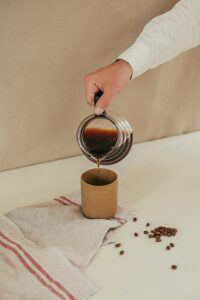
Brewing Skill Required
Neither classic drip coffee makers nor a percolator require you to be a master barista or to have any coffee brewing skills at all.
The process with both percolator coffee and drip brewing is very automated from start to finish once you have your coffee grounds ready. All that is required is to put your grounds in place, fill with water, switch it on, and you will consistently get a quality cup of coffee every single time.
Programmable drip coffee makers can be a little different. The entire process is automated, just as you would expect, but you have a series of adjustments that you can make regarding pre-infusion, brewing temperature and a few others.
A stovetop percolator, be it a small one like a moka pot or a larger electric percolator, can take a little practice to get used to and requires a bit of experience to get it right. You will need to play around and experiment with the variables before you get it right every time. Percolators are easy to run, be they stovetop or electric version, but they require attention to prevent you from over brewing them.
Ease of brewing, hand down a drip brewer is the winner here.
Brew Size
As I like to joke, size matters!
This one is undoubtedly a tie as both a percolator and drip coffee maker can make many cups of coffee at the same time. A drip coffee machine can brew 10 to 12 cups of coffee. A percolator is around the same.
Smaller stovetop percolators like a Moka pot (strictly speaking is not a percolator) can make up to 6 cups of coffee. A more popular coffee machine for conferences which resembles a coffee percolator is a coffee urn, which can make up to 100 cups of coffee and brews them in a very similar way.
I’m not declaring a winner in this area as it is a straight draw.
Versatility
The downside of automation is a lack of control that you have. This only partially applies to both. Modern drip coffee makers that are incredibly convenient have less versatility than a percolator.
A percolator, due to being more manual in their nature, allows you to have a greater level of versatility, but not by a lot, it has to be said.
As a coffee fanatic and coffee aficionado, you will know that you can adjust the grind size, brew time and, with a good electric percolator, the brewing temperature controlling these, and you can control the brew strength manually.
A modern drip coffee maker will allow you to make some adjustments to the brew strength and pre-infusion time due to the preset adjustments available and get you coffee exactly as you want it.
The winner here, and edging it slightly, is the percolator, as the ability to take it on a camping trip if you should so wish. Most certainly not something you can do with a drip coffee machine.
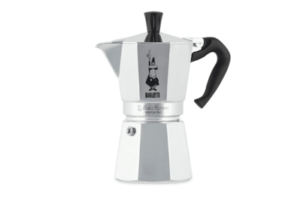
Is A Percolator Better Than Drip?
A question I get asked a lot on our social media is ‘Is a percolator better than drip coffee?” While the question is subjective and very much open to opinion as to which is best in terms of which has the better flavor.
Both will make you a great cup of coffee, and a very tasty one at that. A percolator certainly brews stronger coffee, mostly due to it being double brewed.
A drip coffee maker, when you change the filter type from paper to a metal filter, leaves all the coffee oils in your brew instead of them getting filtered out by the paper filter. The result of changing your filter is a fuller flavor when using drip or pour over coffee brewing methods. It is slightly bolder but not quite a full on bold coffee.
Can I Use A Drip Coffee In A Percolator?
I don’t advise that you use drip coffee in a percolator at all. If you drip brew your coffee and then put it in your percolator, it will simply end up being too strong and overtly bitter.
I also don’t advise the use of drip coffee grounds as the grind size for a drip coffee machine is much finer than what you would use for a percolator. The result would be coffee that is far too strong and overly bitter.
Can You Use Fine Grind Coffee In A Percolator?
As per above, you cannot and absolutely should not use a fine grind in your percolator to make percolated coffee. The ideal grind size is coarsely ground coffee. Medium-Coarse is also okay to use.
If you used a fine grind, you would need a very short brew time to avoid the over brewing and bitter taste.
How Do You Make Percolated Coffee Taste Better?
There are a few techniques that you can try to improve the taste of percolated coffee.
- 1. Use filtered or bottled water.
- 2. Use fresh filters or use no filter at all (metal filter).
- 3. Use fresh coffee beans.
- 4. Roast your own coffee beans to ensure maximum freshness.
- 5. Grind your coffee beans immediately before brewing.
- 6. Clean and descale your machine.
Frequently Asked Questions About Percolator Vs Drip Coffee
Is Percolator Coffee Better Than Drip?
Opinions vary regarding percolator coffee, one thing that is clear, percolator coffee is stronger coffee. Both a percolator and a drip make great coffee but two very different tasting brews. If you prefer a clean, crisp tasting coffee a drip will be your better choice.
If you have a penchant for a bold and strong tasting coffee, a percolator will be more suited for you.
Why Does Percolated Coffee Taste Better?
Percolated coffee has a better taste for many coffee lover due to being strong, bold and intense. It also produces a creamy taste.
Is A Percolator The Same As Drip?
No, percolator coffee is very different from drip coffee. A drip coffee maker uses a constant flow of fresh hot water which is then filtered through a paper, metal or cloth filter (by far the most common is a paper filter). The result is a fresh tasting and very crisp taste of coffee.
A percolator usually uses no filter, although one is available, and it continuously brews your coffee on a perpetual cycle until you stop the brew cycle. It uses the full immersion method combined with the perpetual cycling of the hot water over the coffee grounds. The result is a very strong tasting coffee that is notably higher in caffeine.
What Are The Drawbacks Of A Coffee Percolator?
One of the biggest drawbacks of a coffee percolator is that it is easy to over brew and over extract the coffee and end up with a bitter coffee.
Even when you remove the coffee grounds from a coffee urn, essentially a giant coffee percolator, the continual cycling and heating of the coffee can start to taste stewed.
Why Don t People Use Percolators Anymore?
In the early 1970s, coffee percolators were the mainstay in every home in America, quite common even was a small coffee urn which was used for large family dinner and dinner with neighbours.
It was a technological development and the introduction of and mass availability of drip coffee makers and their convenience of making coffee in a more convenient way without the possibility of over brewing that made percolators less popular.
Why Do Americans Drink Percolated Coffee?
Percolated coffee is still popular in America simply because, currently, at least 2 generations grew up with percolated coffee and simply became their preferred and go to way of making and enjoying a strong cup of coffee.
Why Not To Use A Percolator?
As you are brewing coffee using a percolator the water and eventually coffee and water solution is recycled and rebrewed passing over the ground coffee more than once which is not good for the balance and clarity of flavor.
Is Percolated Coffee Stronger Than Espresso?
Percolator coffee is different from espresso and does not have a stronger flavor. A shot of espresso has a more dominant and intense coffee flavor.
As far as caffeine is concerned, a percolated has more caffeine than espresso, typically 200 mg per 8 Oz (240 ml), a shot of espresso has 75 mg of caffeine.
Frappé-Ing It All Up – Percolator Vs Drip Coffee
In the battle of the brew Percolator Vs Drip Coffee, it is hard to decide which is the winner, as with me, it is different coffee for different reasons. I tend to like good, well brewed coffee, so taste wise, the percolator nails it. When it comes to convenience, undoubtedly, it is a drip coffee.
If you are the type who just wants to switch a machine on and leave it to brew, then a drip coffee is what you are looking for. I can’t imagine how over brewed my coffee would be if I was to set up my percolator and then jump in the shower and let it brew.
Join our cool coffee community and tell us about your own experiences with Percolator Vs Drip coffee makers – which one wins it for you? Find us on Facebook/Meta.


